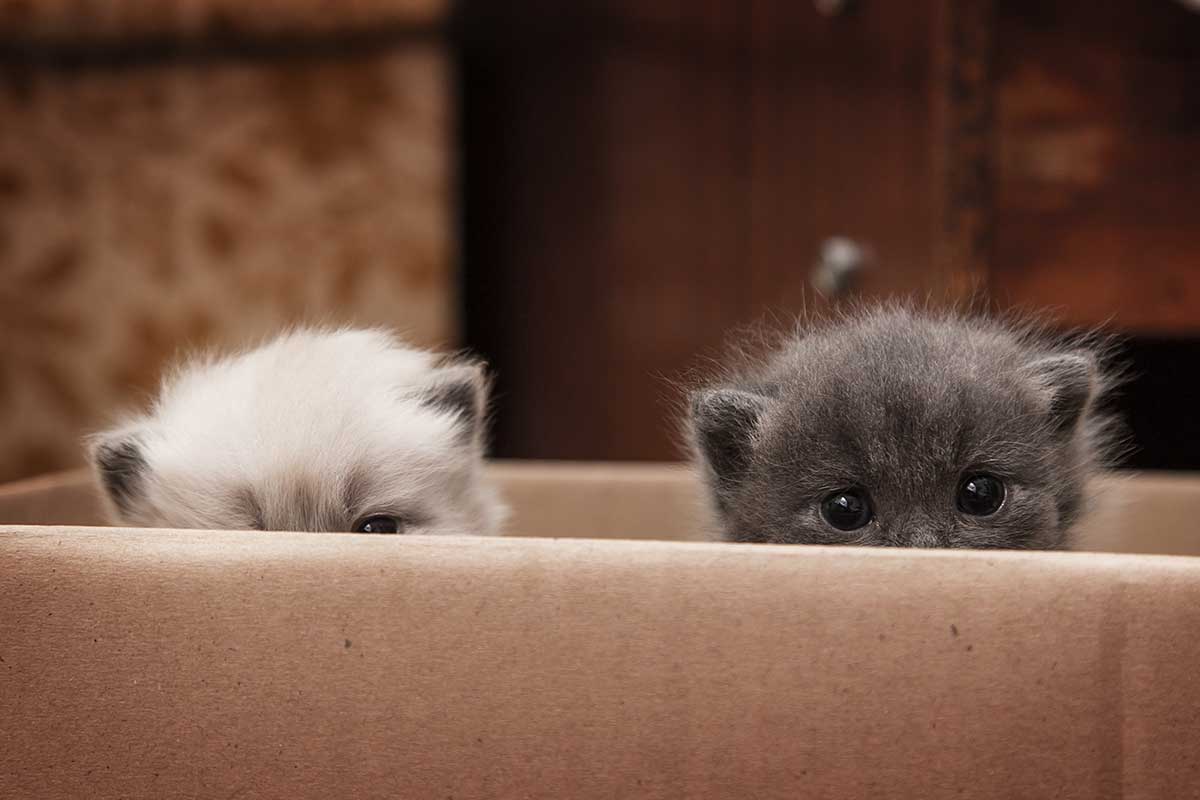If you spend any time online, you’ve seen photos of cats and kittens in cardboard boxes. Little kittens in big boxes, large cats squished into tiny boxes, and multiple cats all in the same box. People are fascinated by the feline species’ love of boxes.
More Than A Cardboard Box
For cats it’s more about hiding spots than it is the box itself. A paper grocery bag, an empty trashcan, and a laundry basket full of clean, warm clothes are all equally fascinating to cats.
Domesticated cats and their small wild cousins are among the smallest of the world’s predators. To be successful, they tend to be ambush hunters. They’ll find a likely hunting spot, hide, and wait for an opportunity. Cat owners are often recipients of this instinct when a tiny kitten leaps out from behind a chair to attack a foot as their person walks past.
But being small, domestic felines and small wild felids often find themselves being hunted by larger predators. The instinct to hide can help keep a cat safe.
Cats also tend to hide when life gets stressful. Other pets, active children, loud music or video games, the vacuum cleaner, or a lot of activity can create stress for the cat. When things get stressful, cats prefer to get out of the area, hide, and take a nap.
Provide A Variety Of Hiding Spots
When you bring home a kitten, provide a box or two, a cat tree, and a cat bed in the area the kitten will occupy while getting used to her new home. Once she’s acclimated and ready to come out of that bathroom or guest bedroom, provide hiding spots in different areas of your home.
Set up a couple where you and the family spend a lot of time. Cats like to hang out with their humans. Another in the bedroom, one in the home office, and even one in the back bedroom where the kitten can be alone will all be welcome. One in a dark closet will always be used. Just don’t completely close the closet door.
Cat trees always have platforms, hammocks, or other bed shapes so felines can sleep in a protected spot up off the floor. Cat towers (round cat trees with space inside) tend to be too small for most adult cats but are great hiding spots for kittens.
Introduce your kitten to some of these hiding spaces one at a time. Don’t overwhelm her by moving her from spot to spot. Instead, drop some treats or a favorite toy in the cardboard box or in the bed on the cat tree. Encourage her to play or to find the treat. Later, even the next day, do the same thing with another hiding spot.
Your Kitten Will Find Her Own, Too
Kittens, being the intelligent, inventive creatures they are, will also find some of their own favorite hiding places. Many kittens like hiding under the bed or sofa, or behind the sofa. High shelves, especially in a closet, are favorite spots, too.
Block off places that are dangerous, such as the spaces behind the refrigerator, dishwasher, washer, and dryer. Close closet or bedroom doors that you wish to keep kitten-free.
When you find a couple of spots your kitten likes, place a folded blanket or towel there or a cat bed. Make her comfortable in her chosen spot.
This article was reviewed/edited by board-certified veterinary behaviorist Dr. Kenneth Martin and/or veterinary technician specialist in behavior Debbie Martin, LVT.
Want to stay in the loop on the latest and greatest in keeping your pet happy and healthy? Sign up for our free newsletter by clicking here!








